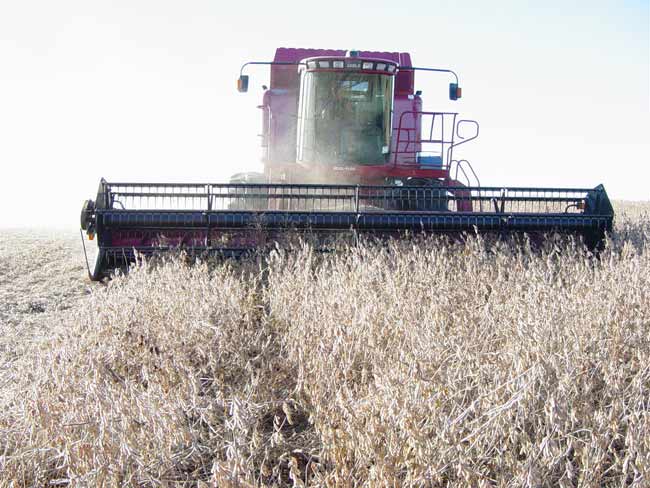The Energy Debates: Biodiesel

Editor's Note: "The Energy Debates" is a LiveScience series about the pros, cons, policy debates, myths and facts related to various alternative energy ideas. We invite you to join the debate by commenting directly on each article. The Facts Just after the invention of the diesel engine, one was shown running on peanut oil at the World's Fair in Paris in 1900. Now demand for biodiesel — diesel fuel derived from animal fat or vegetable oil — is growing worldwide. Biodiesel is not the same thing as straight vegetable oil or animal fat. The fuel is made through a process called transesterification, where the oil or fat is combined with alcohol and a lye catalyst to create biodiesel and the compound glycerol, which is widely used in the food, beverage, chemical and pharmaceutical industries. In the United States, most biodiesel is made from soybeans, but it can be made from many sources, even used kitchen grease. Biodiesel makes up a growing fraction of diesel use in the United States. Between 2004 and 2006, biodiesel use increased tenfold from roughly 25 million gallons to 250 million gallons. Still, it made up less than 1 percent of the nation's total highway diesel fuel use as of 2007, according to the Union of Concerned Scientists, a science advocacy group. Europe is the leader in biodiesel, producing 77 percent of all biodiesel worldwide, according to 2006 figures from the European Biodiesel Board. "Diesel is much more popular as a passenger car fuel in Europe than in the United States," explained Jeremy Martin, a senior scientist at the Union of Concerned Scientists' clean vehicles program. Pure biodiesel can have engine compatibility issues or cold weather operating concerns, so often it is blended with conventional diesel fuel. Common biodiesel blends are B20, which is 20 percent biodiesel and 80 percent petroleum diesel, and B2, which is 2 percent biodiesel and 98 percent petroleum diesel. Pros Since biodiesel is ultimately derived from animals or plants, it is renewable, unlike fossil fuels. The fact that it can be homegrown also could lessen dependence on foreign oil and support local farmers. For the most part, when compared to conventional diesel, biodiesel significantly reduces air pollution, according to the EPA — burning pure biodiesel releases no sulfates, which help cause acid rain, and only half as much poisonous carbon monoxide and half as much tiny little soot particles, which contribute to thousands of premature deaths from heart and lung disease annually. Still, pure biodiesel would lead to 10 percent more nitrogen oxides, which help form smog. The B20 fuel that is partly biodiesel would not increase nitrogen oxide levels and lead to 20 percent less sulfates, 10 percent less particulate matter and 10 percent less carbon monoxide, the EPA noted. Cons A major source of controversy when it comes to biodiesel and other biofuels such as ethanol is what ingredient or "feedstock" is used to make the fuel. When oils from crops are used, a number of problems can arise. For instance, biodiesel and other biofuels are often touted as environmentally friendly since they are typically made from plants, which suck the global warming gas carbon dioxide from the atmosphere to grow. However, the land may be damaged in order to grow these crops as demand for biofuels grow — for example, in Indonesia, biodiesel may be causing deforestation, as native forests are destroyed to make way for palm oil plantations, according to the Union of Concerned Scientists. The chemicals from agricultural fertilizers and pesticides may also upset ecosystems. "Just because it comes from plants doesn't mean there are no environmental consequences to producing it," Martin said. Another complex issue that is raised when crops are used to make biofuel is whether that has or will drive up food prices. Instead of using new oil from crops, recycled oil could be used, Martin said. The U.S. Environmental Protection Agency estimates restaurants and hotels generate roughly 3 billion gallons of waste cooking oil annually, enough to fill tanker trucks arranged bumper-to-bumper from San Francisco to Washington, D.C., and back. In addition, a process known as "gasification" currently used in a few coal plants can convert any biomass — matter derived from organisms — into biodiesel and other biofuels. "It's more capital investment up front, but you could use it to make fuel from almost any kind of biomass, ranging from leftover wood products such as sawdust and wood chips or even certain portions of garbage," Martin said. "Gasification is something we already know how to do on an industrial scale." A number of alternative feedstocks may exist as well, such as algae, which can grow in brackish water, or non-food crops such as the plant jatropha, which can potentially grow in poor soils, Martin added. "When it comes to algae, it's a science project that's worth pursuing, but there are no guarantees as to when it might be considered or what scale it might find use," he said. What do you think?
- Vote: The Best Alternative Energy Idea
- Innovation: Ideas to Power the Future
- Video – The Next Step in Alternative Fuel
- Whatever Happened to Biodiesel?
Get the world’s most fascinating discoveries delivered straight to your inbox.



